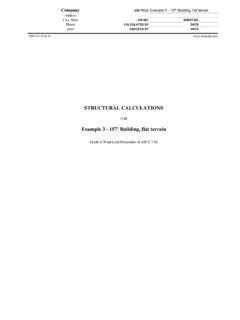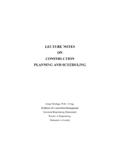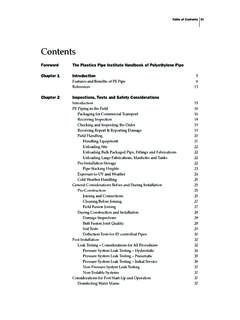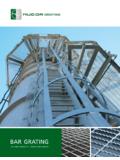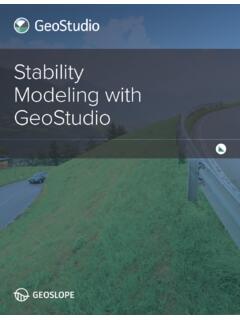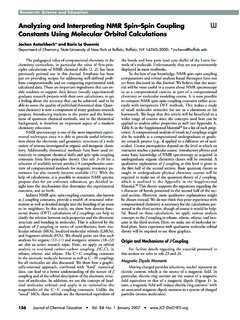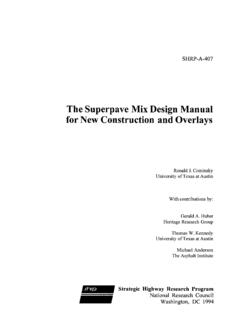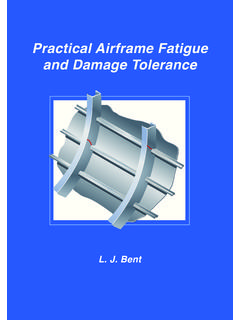Transcription of manual 11 8 10 - Emory University
1 I. SS.. ht rig py Co I. SS.. ht rig py Co I. SS.. ht rig py Co I. SS.. ht rig py Co Contents Co 1 Conceptual and Statistical Background for Two-Level Models ..8. The general two-level model .. 8. Level-1 model .. 9. Level-2 model .. 9. Parameter 10. Empirical Bayes ("EB") estimates of randomly varying level-1 coefficients, q j .. 10. py Generalized least squares (GLS) estimates of the level-2 coefficients, qs .. 11. Maximum likelihood estimates of variance and covariance components .. 11. Some other useful statistics .. 11. Hypothesis 12. Restricted versus full maximum likelihood .. 12. rig Generalized Estimating Equations .. 13.
2 2 Working with Constructing the MDM file from raw 15. Executing analyses based on the MDM file .. 15. ht Model checking based on the residual file .. 16. Windows, interactive, and batch execution .. 17. An example using HLM2 in Window 17. Constructing the MDM file from raw data .. 17. Executing analyses based on the MDM 26. Annotated HLM2 31. Model checking based on the residual 35.. Handling of missing 43. The Basic Model Specifications - HLM2 dialog box .. 45. Other analytic options .. 46. Controlling the iterative 46. Estimation control .. 47. Constraints on the fixed effects .. 48. To put constraints on fixed 48. SS. Modeling heterogeneity of level-1 variances.
3 49. Specifying level-1 deletion variables .. 52. Using design 52. Hypothesis testing .. 54. Output 59. Models without a level-1 60. Coefficients having a random effect with no corresponding fixed 60. I. Exploratory analysis of potential level-2 predictors .. 61. 1. 3 Conceptual and Statistical Background for Three-Level The general three-level 63. Level-1 model .. 63. Level-2 model .. 64. Level-3 model .. 65. Parameter estimation .. 66. Co Hypothesis testing .. 67. 4 Working with An example using HLM3 in Windows mode .. 68. Constructing the MDM file from raw 68. Executing analyses based on the MDM 73. An annotated example of HLM3 output.
4 74. py Model checking based on the residual 79. Specification of a conditional model .. 82. Other program 87. Basic 87. Iteration control .. 87. Estimation 87. rig Hypothesis 88. Output 88. 5 Conceptual and Statistical Background for Four-Level The general four-level model .. 89. ht Level-1 model .. 89. Level-2 model .. 90. Level-3 model .. 90. Level-4 model .. 91. Parameter 91. Hypothesis testing .. 92.. 6 Working with An example using HLM4 in Windows mode .. 93. Constructing the MDM file from raw 94. Executing analyses based on the MDM 97. A 4-level measurement model 98. An annotated example of HLM4 99. SS. Other program 103.
5 7 Conceptual and Statistical Background for Hierarchical Generalized Linear Models (HGLM)..104. The two-level HLM as a special case of 105. Level-1 sampling model .. 105. I. Level-1 link function .. 105. Level-1 structural 106. Two-, three-, and four- level models for binary outcomes .. 106. Level-1 sampling model .. 106. Level-1 link function .. 107. Level-1 structural 107. 2. Level-2 and Level-3 and Level-4 107. The model for count data .. 107. Level-1 sampling 107. Level-1 link 108. Level-1 structural model .. 108. Level-2 model .. 109. The model for multinomial 109. Level-1 sampling 109. Level-1 link 110. Level-1 structural model.
6 110. Co Level-2 model .. 110. The model for ordinal data .. 111. Level-1 sampling 111. Level-1 structural model .. 111. Parameter 112. Estimation via PQL .. 112. Properties of the 116. Parameter estimation: A high-order Laplace and adaptive Gaussian Quadrature approximation py of maximum likelihood .. 117. Unit-specific and population-average models .. 118. Over-dispersion and under-dispersion .. 120. Restricted versus full PQL versus full ML .. 120. Hypothesis 120. rig 8 Fitting HGLMs (Nonlinear Models) ..121. Executing nonlinear analyses based on the MDM 121. Case 1: a Bernoulli model .. 123. Case 2: a binomial model (number of trials, mi j 1).
7 130. Case 3: Poisson model with equal exposure .. 132. ht Case 4: Poisson model with variable 134. Case 5: Multinomial 135. Case 6: Ordinal model .. 140. Additional features .. 144. Over-dispersion .. 144. Adaptive Gauss-Hermite Quadrature and Laplace approximations for binary 144.. Printing variance-covariance matrices for fixed effects .. 146. Fitting HGLMs with three and four levels .. 146. 9 Conceptual and Statistical Background for Hierarchical Multivariate Linear Models (HMLM) ..147. Unrestricted 148. SS. Level-1 model .. 148. Level-2 model .. 149. Combined model .. 149. HLM with homogenous level-1 variance .. 150. Level-1 model.
8 150. Level-2 model .. 150. Combined model .. 151. I. HLM with varying level-1 variance .. 151. HLM with a log-linear model for the level-1 variance .. 151. First-order auto-regressive model for the level-1 residuals .. 152. HMLM2: A multilevel, multivariate model .. 152. Level-1 model .. 152. The combined model .. 153. 3. Level-3 model .. 153. Level-2 model .. 153. 10 Working with HMLM/HMLM2 ..155. An analysis using HMLM via Windows 155. Constructing the MDM from raw 155. Executing analyses based on the MDM 157. An annotated example of 158. An analysis using HMLM2 via Windows 171. Co Executing analyses based on the MDM 171. `Specifications for this HMLM2 171.
9 11 Special Latent variable 179. A latent variable analysis using HMLM: Example 179. A latent variable analysis using HMLM: Example 182. py Applying HLM to multiply-imputed 185. Data with multiply-imputed values for the outcome or one covariate .. 185. Calculations 186. Working with plausible values in HLM .. 188. Data with multiply-imputed values for the outcome and 189. "V-Known" models for 189. rig Data input format .. 190. Creating the MDM 190. Estimating a V-known model .. 191. V-known analyses where Q = 194. Spatial dependence models for HLM2 .. 194. A spatial analysis using 194. Other outcome variables .. 200. ht 12 Conceptual and Statistical Background for Cross-classified Random Effect Models (HCM2).
10 201. The general cross-classified random effects models .. 201. Level-1 or "within-cell" model .. 202. Level-2 or "between-cell" model .. 202.. Parameter estimation .. 203. Hypothesis 203. 13 Working with HCM2 ..204. An example using HCM2 in Windows mode .. 204. Constructing the MDM file from raw data .. 204. SS. Executing analyses based on the MDM 208. Specification of a conditional model with the effect associated with a row-specific predictor fixed .. 211. Specification of a conditional model with the effect associated with the row-specific predictor 215. Other program 218. I. 14 Conceptual and Statistical Background for Three-Level Hierarchical and Cross-classified Random Effects Models (HCM3).
